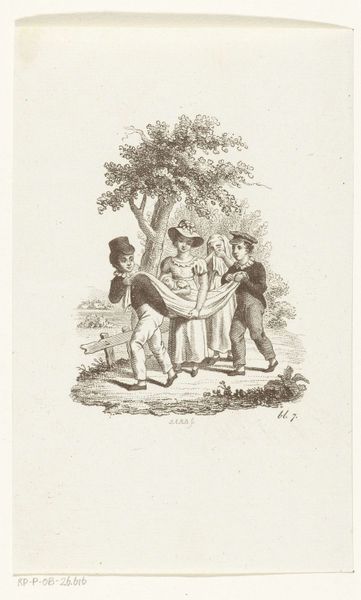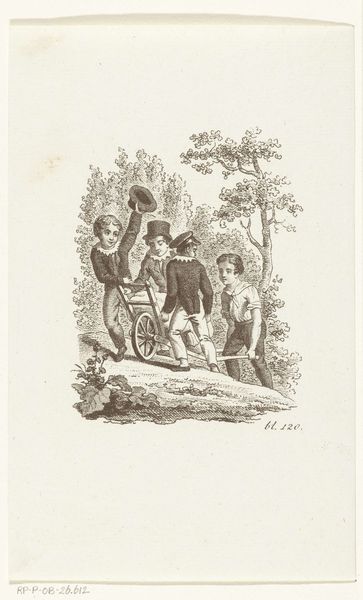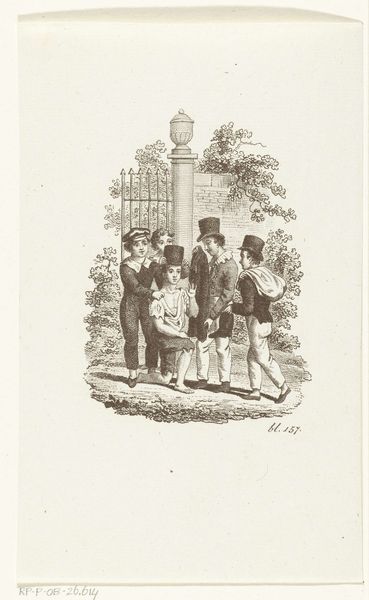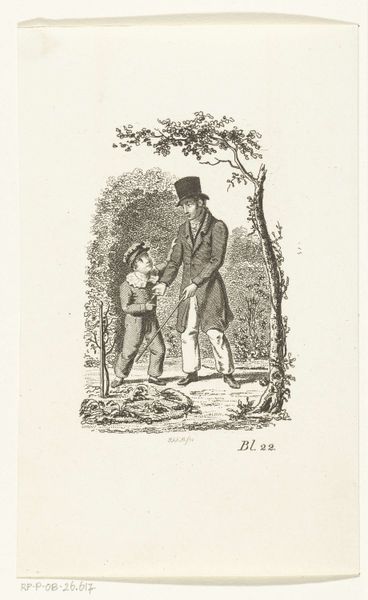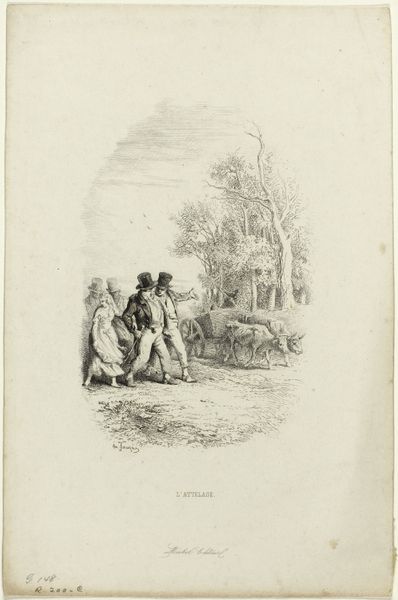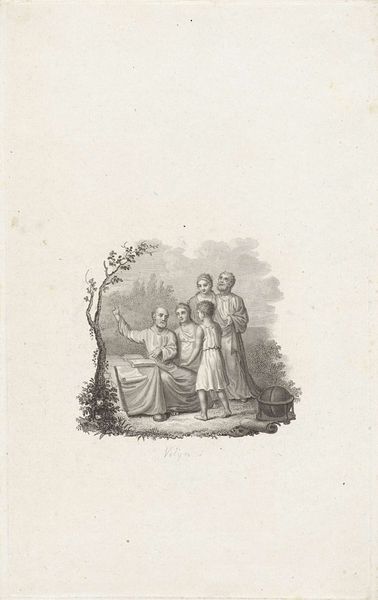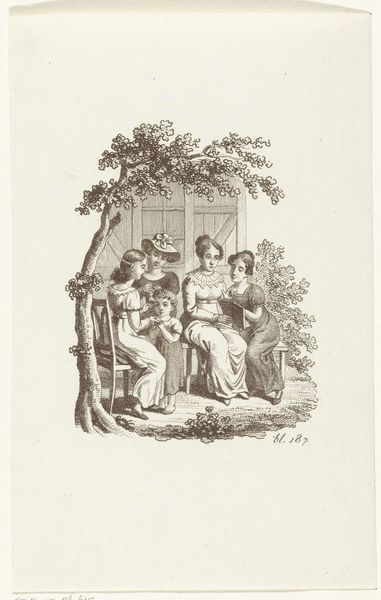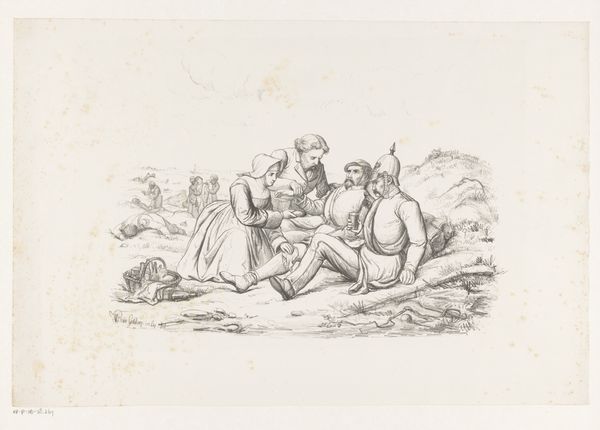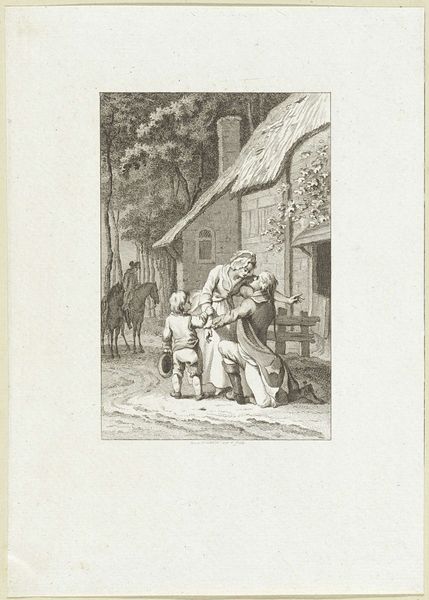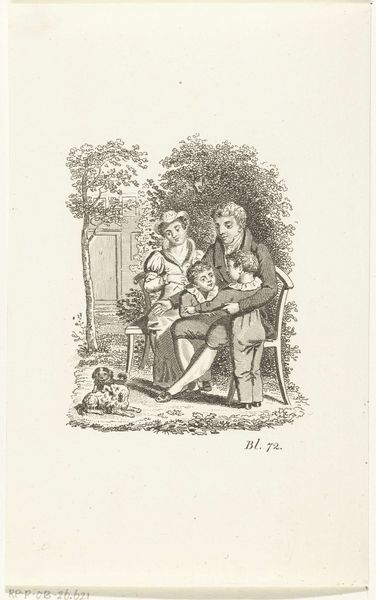
print, engraving
# print
#
figuration
#
child
#
romanticism
#
genre-painting
#
engraving
Dimensions: height 183 mm, width 114 mm
Copyright: Rijks Museum: Open Domain
Editor: Here we have Johannes Alexander Rudolf Best's "Four Children Arguing Over a Dog," an engraving from somewhere between 1807 and 1855. There's a real sense of drama captured in this simple scene, and it almost feels staged. How do you interpret this work? Curator: The squabble itself might seem trivial, but it's a window into the complex emotional landscape of childhood. The dog becomes a symbol of affection, of control, of perhaps even nascent power dynamics between these children. Notice how the child in the hat asserts dominance? The others seem conflicted: a desire to nurture, to possess, but also an underlying tension. Editor: That power dynamic is interesting! I hadn’t really thought of it that way. The kid in the hat does seem to be pulling the other one around. Curator: The hat is a clue, wouldn’t you agree? Hats were signs of position or social class. So, what happens when the traditional social order has a tiff over affections with no adults? Chaos. But what happens afterwards? Does anyone apologize or learn a lesson? How will the trauma play out later in life? And it comes back to something timeless – the desire for connection, the struggle for control. We are who we’re raised to be, whether in the street or the home. Editor: So, it’s not just kids fighting; it’s like a microcosm of larger societal issues playing out? Curator: Exactly. The artist captures the universal, age-old problem of managing relationships. And not to be underestimated, how do animals see the ways humans behave with them? Editor: That's a perspective I hadn't considered. Seeing it as more than just a genre scene really changes things. Curator: And I, in turn, got to view the hat from an under-explored point of view! It is the details in imagery that offer unique entry points.
Comments
No comments
Be the first to comment and join the conversation on the ultimate creative platform.
